We started from Flachau on a tour of Hallstatt - Bad Ischl - St. Gilgen - Salzburg, planning to return to Flachau in the evening.
In Salzburg, we only visited the Hohensalzburg Castle, as we had covered the other city attractions in another tour some years ago. Our first stop was in Hallstatt, located 65 km from Flachau, the world's most famous village and possibly the most beautiful place in Austria, on the shore of Lake Hallstatt in the Salzkammergut region. It is not possible to enter the historic center by car, even if you have hotel accommodation in the village.
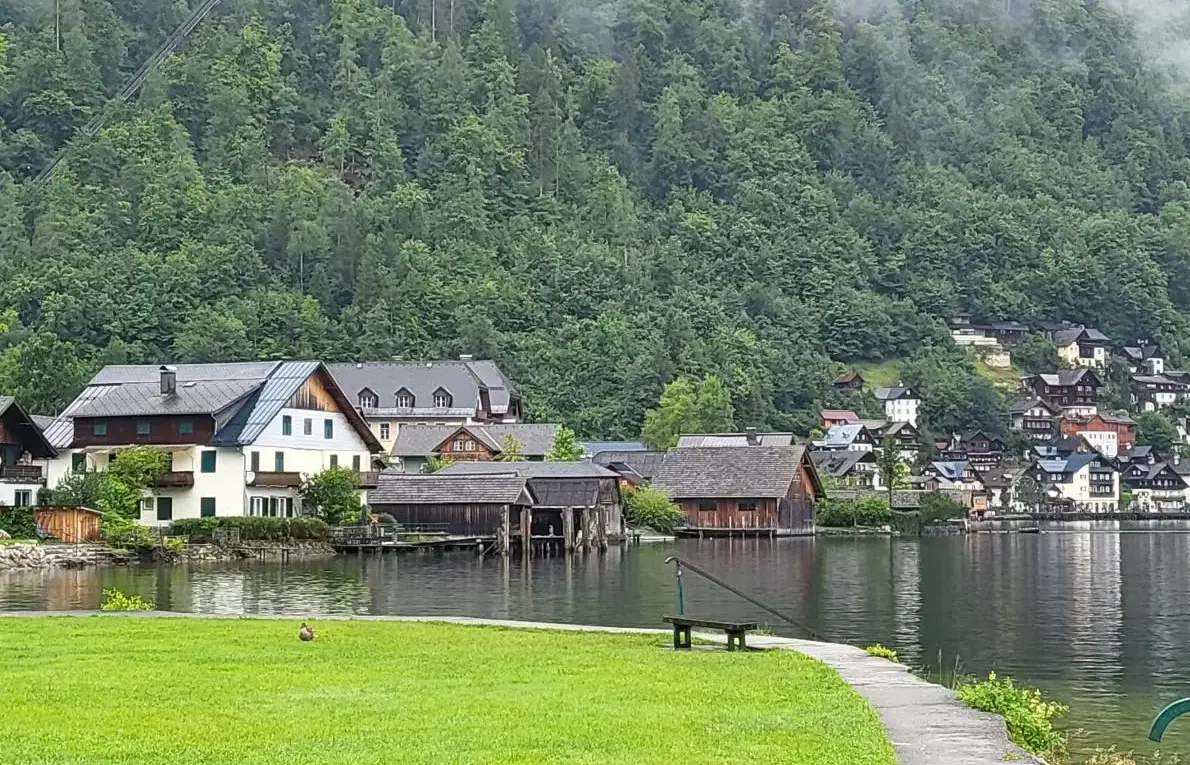
Since it is visited by many tourists, it is recommended to arrive here as early as possible to find a parking spot. There are 3 parking areas in Hallstatt, all equipped with an electronic display showing the number of available spots.
The closest parking is P2, near the funicular, on Kohlstattweg Street. Next is P1, located a 15-minute walk from the village center, on Salinenplatz 4 Street, and P3 is at the village exit, from where it takes about 40-50 minutes to walk to the center.
We found a spot in P2, which was quite crowded and expensive, charging 10 euros for 3-4 hours. Even though the weather was not exactly pleasant for a walk (fog and drizzle), the village was full of tourists, overwhelming the community of 780 residents in Hallstatt.
A large number of tourists come from East Asia, as the Austrian location became famous because the South Korean series "Spring Waltz" was filmed here in 2006, and in China, a faithful replica of the village was built in 2012. The motto of the authentic town is: "Hallstatt – the original. Photographed a million times, copied once, never equaled."
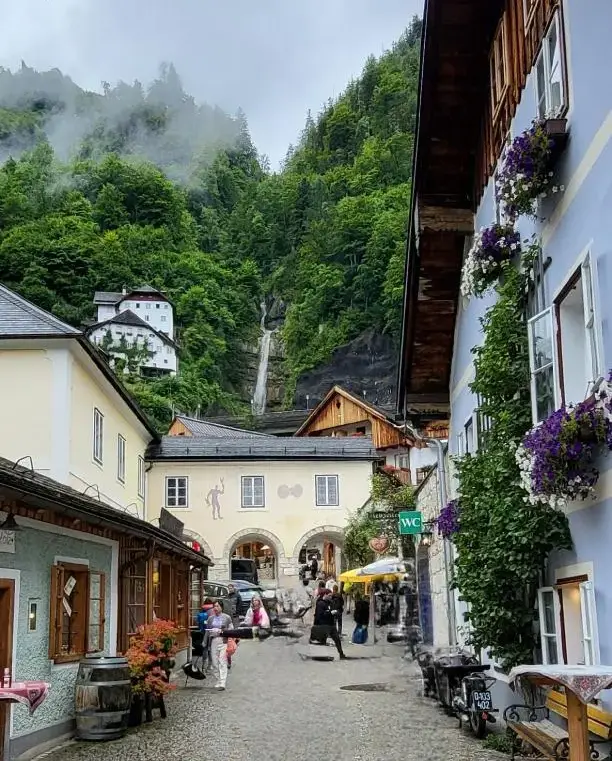
From the parking area, we headed towards the village, stopping by the lake in a less crowded area to quietly admire the stunning view, with picture-postcard images.
One of the area's attractions is the Skywalk, a huge platform situated at a height of 360 meters, accessible either by funicular or by foot on a 1.5-hour trail, from where the entire lake, surrounded by mountains with the wonderful village at their base, can be seen.
We opted for a walk through the historic center, passing by the wooden houses typical of the Austrian mountainous region, with flowers on balconies and souvenir shops. The area is known for its salt mines and also due to the archaeological discoveries from the Iron Age.
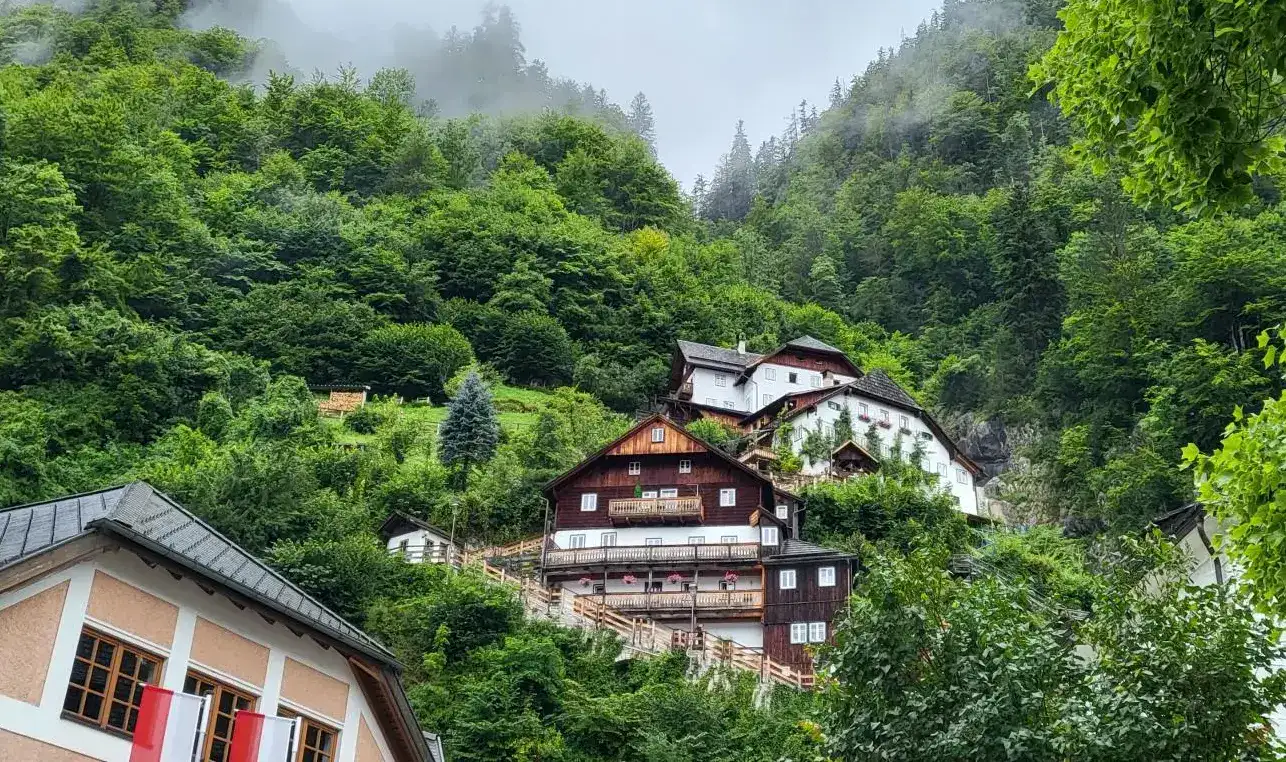
In the center, there's the Hallstätter Welterbemuseum (the Hallstatt Museum) and the Marktplatz (historic market square) surrounded by colorful buildings, in the middle of which stands the Dreifaltigkeitssäule (Column of the Holy Trinity), placed there in 1744.
In 1750, a devastating fire destroyed the houses in the historic center, turning the square into ashes. The Catholic church located on the lakeside edge of the central area is favored by tourists due to the ossuary with over 1200 skulls.
We then headed towards the most popular observation point, in the northern part of the village, capturing the famous image found on all postcards, photographs, or any Google search about Hallstatt, with the idyllic view of the church tower, the lake, and the mountains in the background.
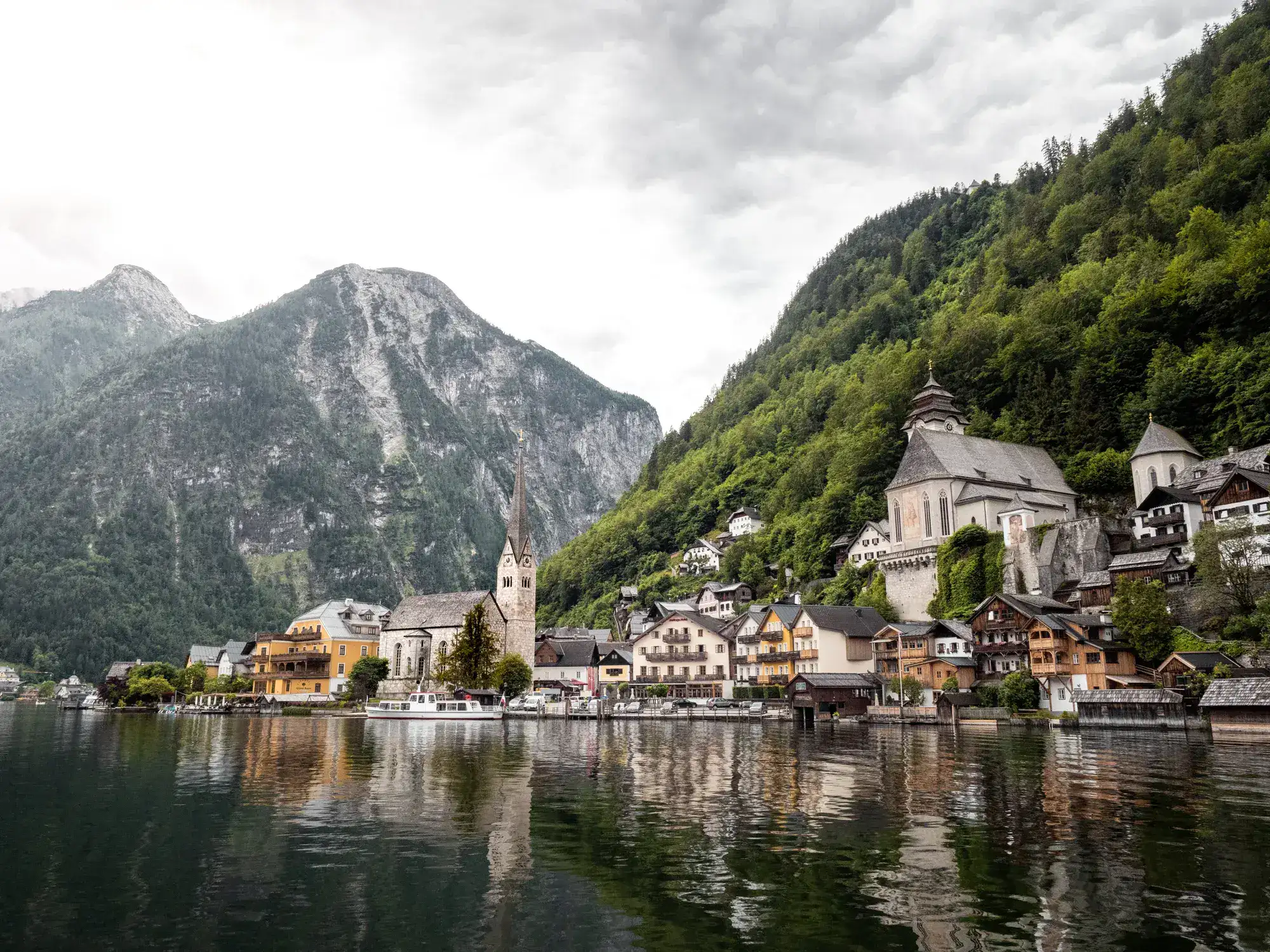
For those who spend more time here, the salt mine can be visited on a guided tour lasting an hour and a half. We were content with walking through the village, along the lake shore, after which we returned to the car and headed towards our next location, Bad Ischl, where we arrived after about half an hour.
Bad Ischl is known for the therapeutic properties of its salty, iodinated, and sulphurous waters, making it one of the most renowned thermal spas in Austria. It is also an important industrial center for the processing and marketing of salt and an imperial city, where Emperor Franz Joseph I spent no fewer than 82 summers and celebrated 81 birthdays.
We parked near the central park, a green oasis with multicolored flowers and areas shaded by old trees, where monuments to Franz Lehár and Emmerich Kalman recall the operetta composers, and the Lehár Festival takes place annually in the very beautiful Kongress & TheaterHaus located in the center of the park. In the summer months, there is a music pavilion that serves as a venue for outdoor concerts.
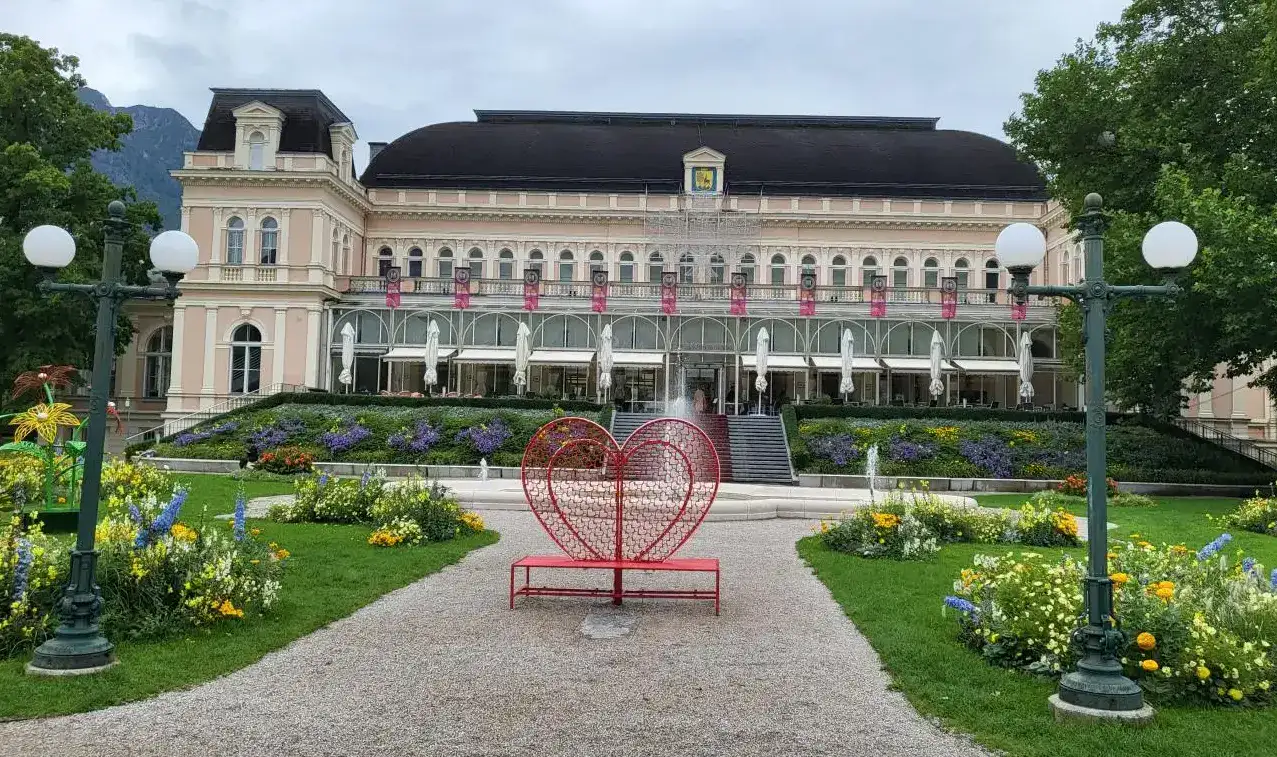
In a small square, we came across a fountain erected in honor of Archduke Franz-Karl and his wife, Sophie, whose portraits are carved in niches, and sculptures of a miner, a hunter, and a fisherman represent the traditional occupations of the town during the Archduke's era.
The tower of the St. Nicholas Catholic Church, the oldest church in Bad Ischl, rises above the rooftops, and opposite it is the old Trinkhalle, an impressive historic white building constructed in the style of a Greek temple, surrounded by Corinthian columns, which once had mineral water fountains with healing properties. Today, it houses a tourist information center.
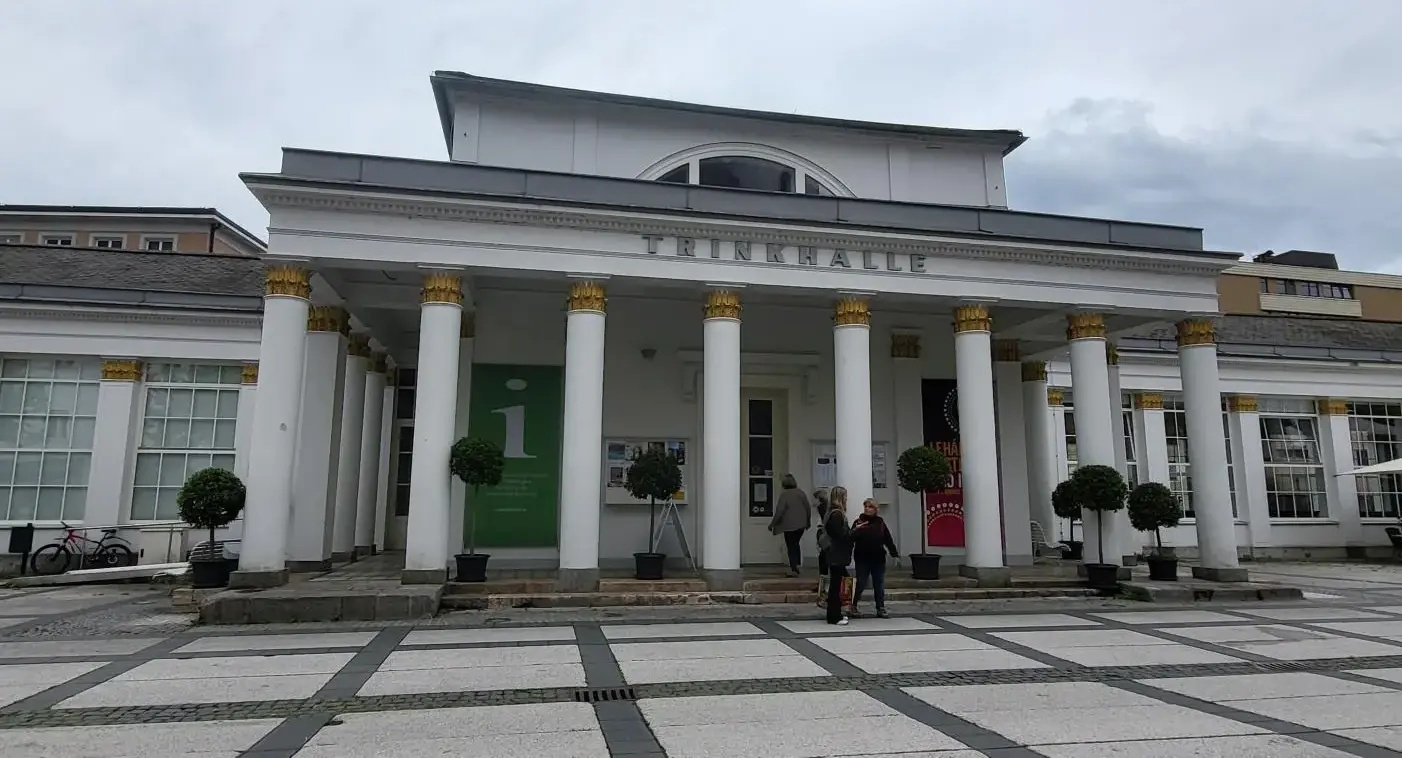
The post and telegraph office is a Neo-Renaissance style building that hosted the first imperial and royal post office in Ischl. It proved its efficiency in 1897, when a devastating flood hit Ischl and isolated the town from the rest of the world, with 15,750 telegrams being sent in 6 days.
In a small square, we came across a fountain erected in honor of Archduke Franz-Karl and his wife, Sophie, whose portraits are carved in niches, and the sculptures of a miner, a hunter, and a fisherman represent the traditional professions of the city from the Archduke's era.
The tower of St. Nicholas' Catholic Church, the oldest church in Bad Ischl, rises above the rooftops, and opposite it is the old Trinkhalle, an impressive white historic building constructed in the style of a Greek temple, surrounded by Corinthian columns, which once had mineral water fountains with healing properties. Today, it houses a tourist information center.
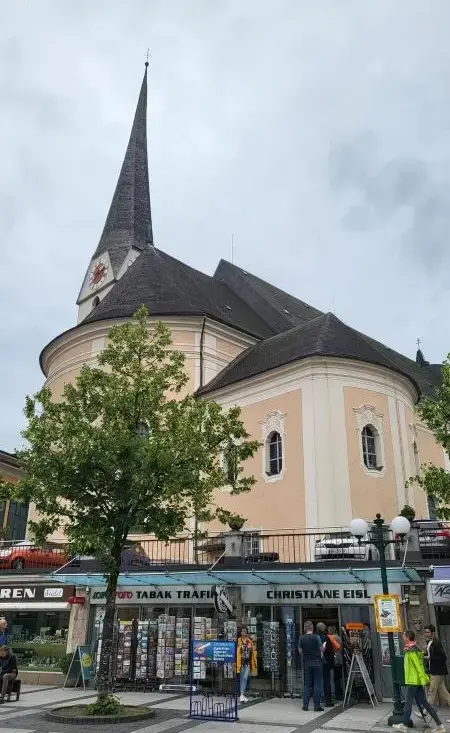
The post and telegraph office is a Neo-Renaissance style building that housed the first imperial and royal post office in Ischl. It proved its efficiency in 1897 when a devastating flood hit Ischl and cut off the city from the rest of the world, with 15,750 telegrams being sent in 6 days.
The former Hotel zur Post is the oldest in the city, located between St. Nicholas Church and the Lehar Summer Theater.
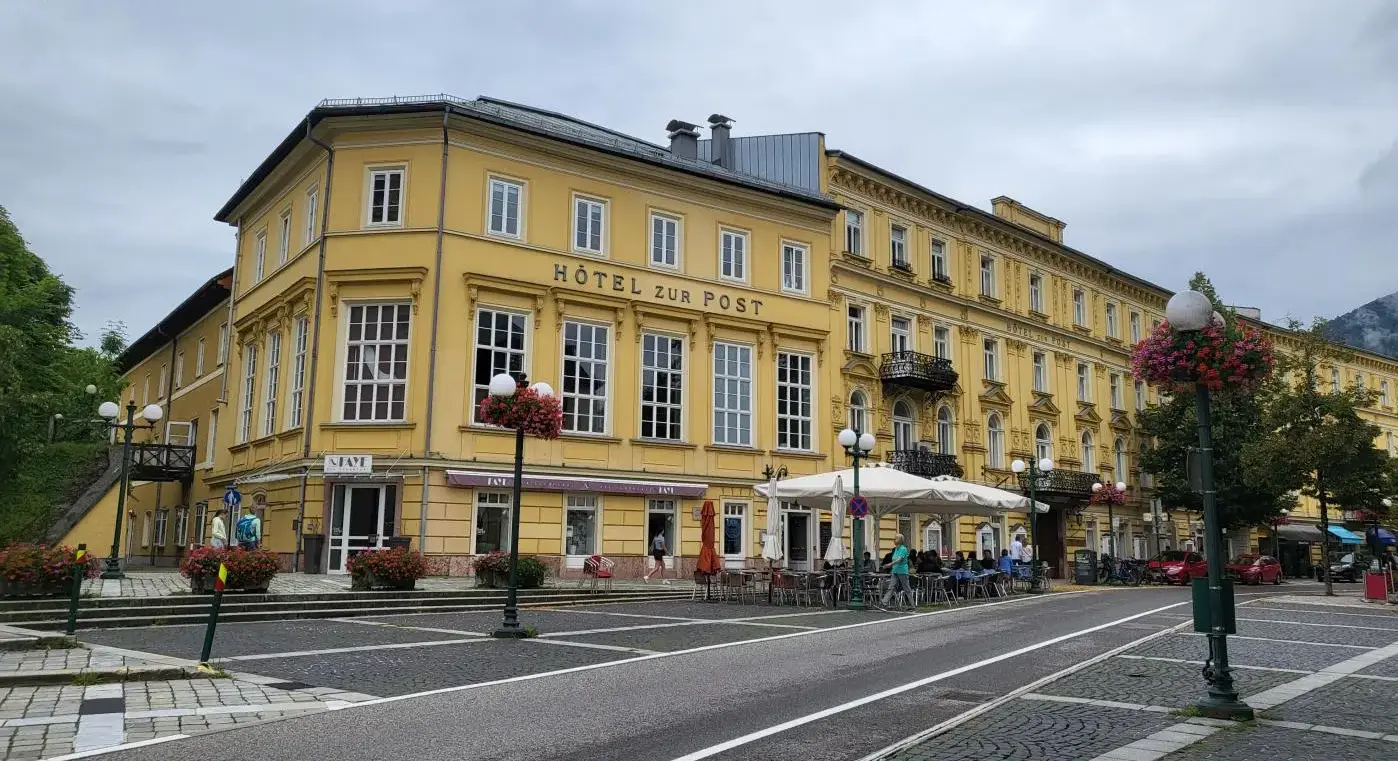
The Kaiserzug is an electric train that transports passengers to the most beautiful places in the city, providing them with information about the history, buildings, and surrounding area during the ride.
We crossed a bridge over the Ischl river and arrived at the Kaiservilla, the wedding gift of Archduchess Sophie for her son, Emperor Franz Josef, and his wife, Empress Elisabeth. It was redesigned and extended in the shape of an 'E', becoming the summer residence of the royal family.
The villa hosts an impressive collection of hunting trophies, weapons, paintings, clothes, and personal belongings that belonged to the royal couple. The gardens were organized by the same landscape architect who designed the gardens of the Schönbrunn and Laxenburg palaces.
We also visited Café Zauner, one of the most important confectioneries and patisseries in Austria, renowned for its tradition and quality, offering dozens of pastry and chocolate candy specialties since 1832.
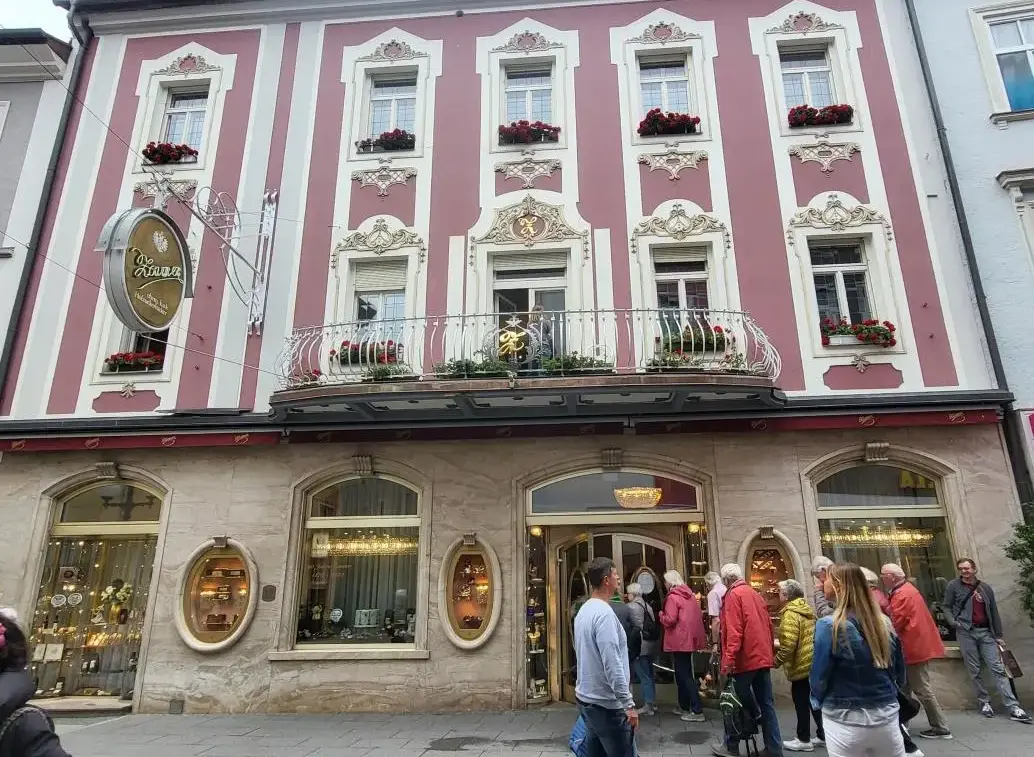
The most famous specialty is Zaunerstollen, which has been produced for over a century and is now the flagship product, being a fine combination of nuts, sugar, and wafer with nougat. Emperor Franz Josef used to visit the confectionery every day to enjoy a Guglhupf, a lemon cake.
The next picturesque town we visited was St. Gilgen, located on the western shore of the beautiful Lake St. Wolfgang. Our first stop was on the lakefront promenade, equipped with many benches and flower planters, and a pier from where pleasure boats depart and arrive, cruising on the blue waters. We also saw a house located right on the lake shore, actually built above it.
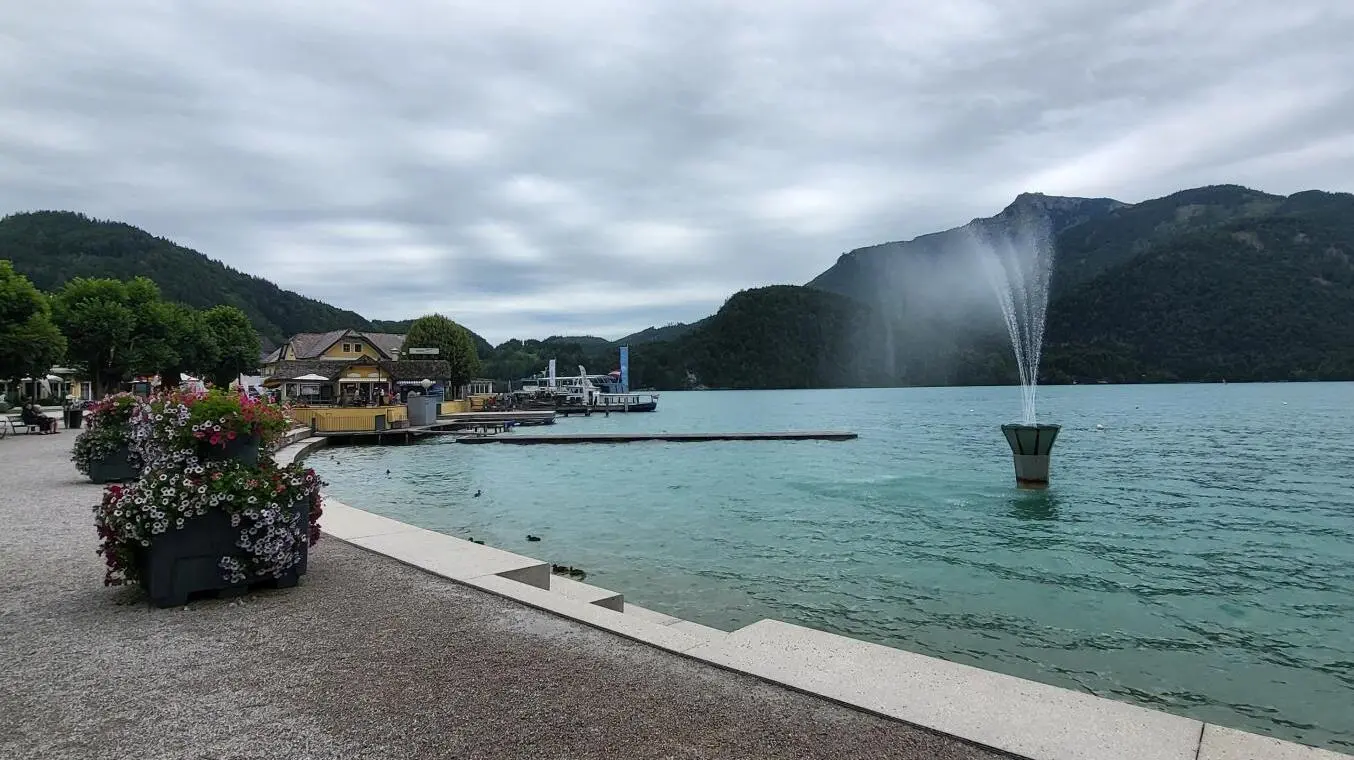
In the center is the house where the mother of the great musical genius, Mozart, was born, on whose exterior walls is written "Mozarthaus Sankt Gilgen," and in the windows are drawn portraits of the composer's mother and father.
The houses have a typical Austrian architecture, but each is unique through its colors and ornaments, what characterizes them all being the cleanliness and freshness, giving the impression that they were just painted.
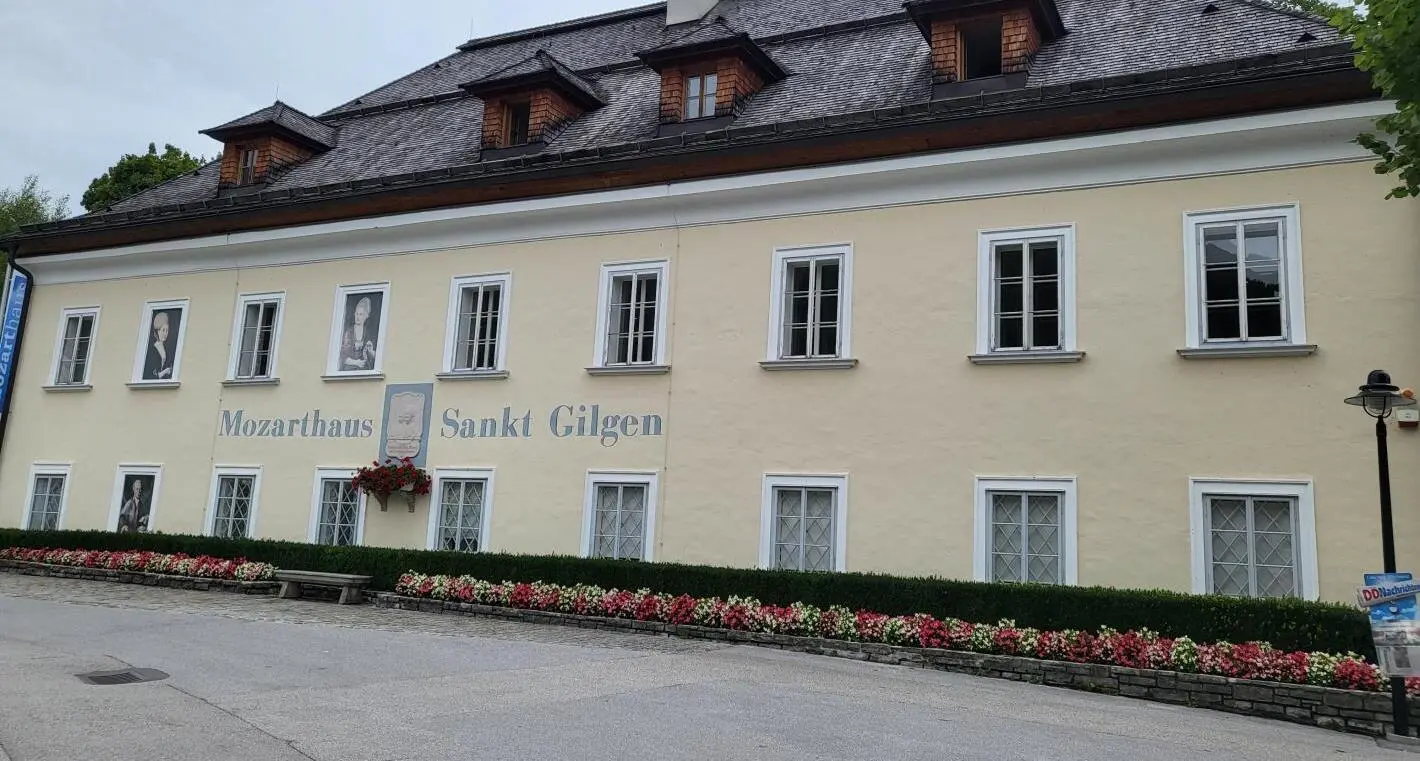
We also came across an international school, St. Gilgen International School, opened in 2008, lost among the many guest houses available to tourists who come for the ozonated mountain air and the wonderful landscapes.
There are also a few hotels, one of them, the Radetzky hotel, standing out from the town's urban landscape by its size, but keeping the classic architecture.
The town hall, Rathaus, is located in a wide square named Mozartplatz. The town hall building resembles a gingerbread house, with a small tower above the entrance door that stands out. In front of it, surrounded by flowers, is the Mozart Fountain, with a bronze statue of Mozart playing the violin, although Mozart never visited St. Gilgen.
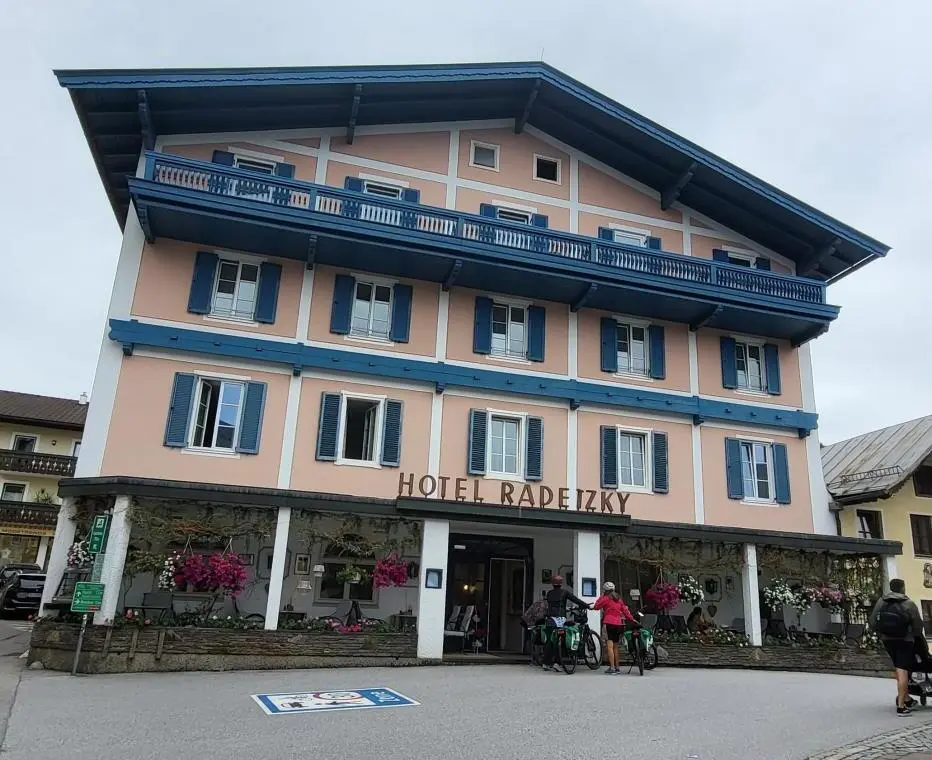
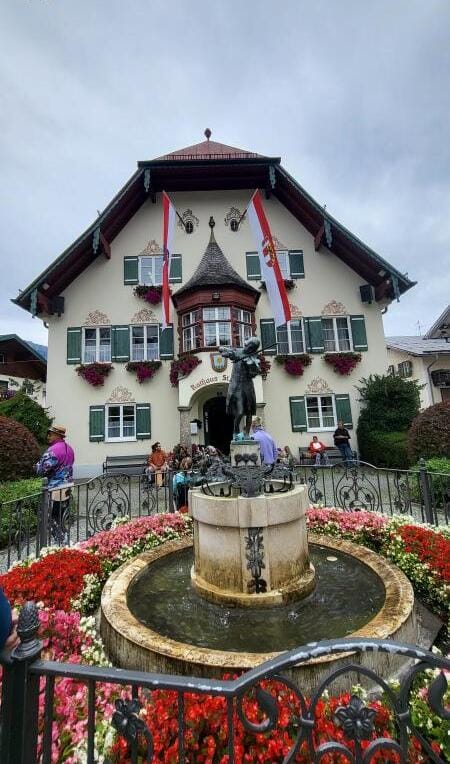
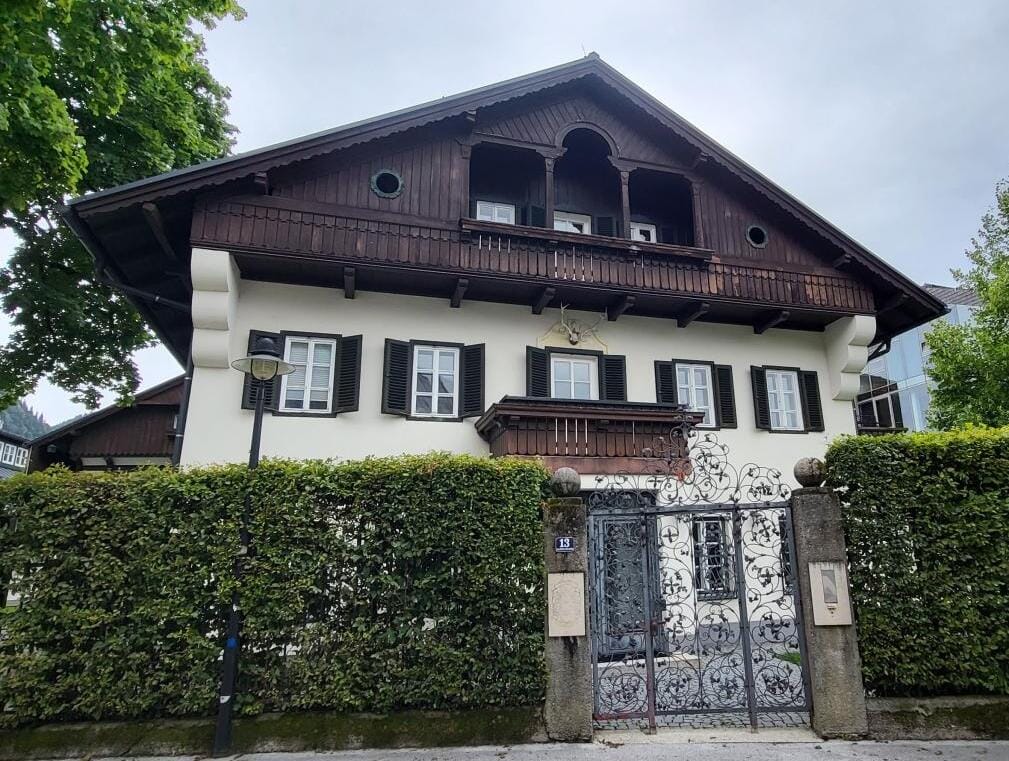
The Radetzky hotel, The town hall, and St. Gilgen International School
Across from the Rathaus is a four-star hotel and one of the most elegant accommodations in St. Gilgen, Gasthof Zur Post (the guesthouse at the post office). The building has an impressive exterior painting, 300 years old, depicting a hunting scene.
This was not just a tavern but also ensured mail delivery and public transport, and in the times when transport was provided by horses, it hosted travelers, the postal carrier, and his horses.
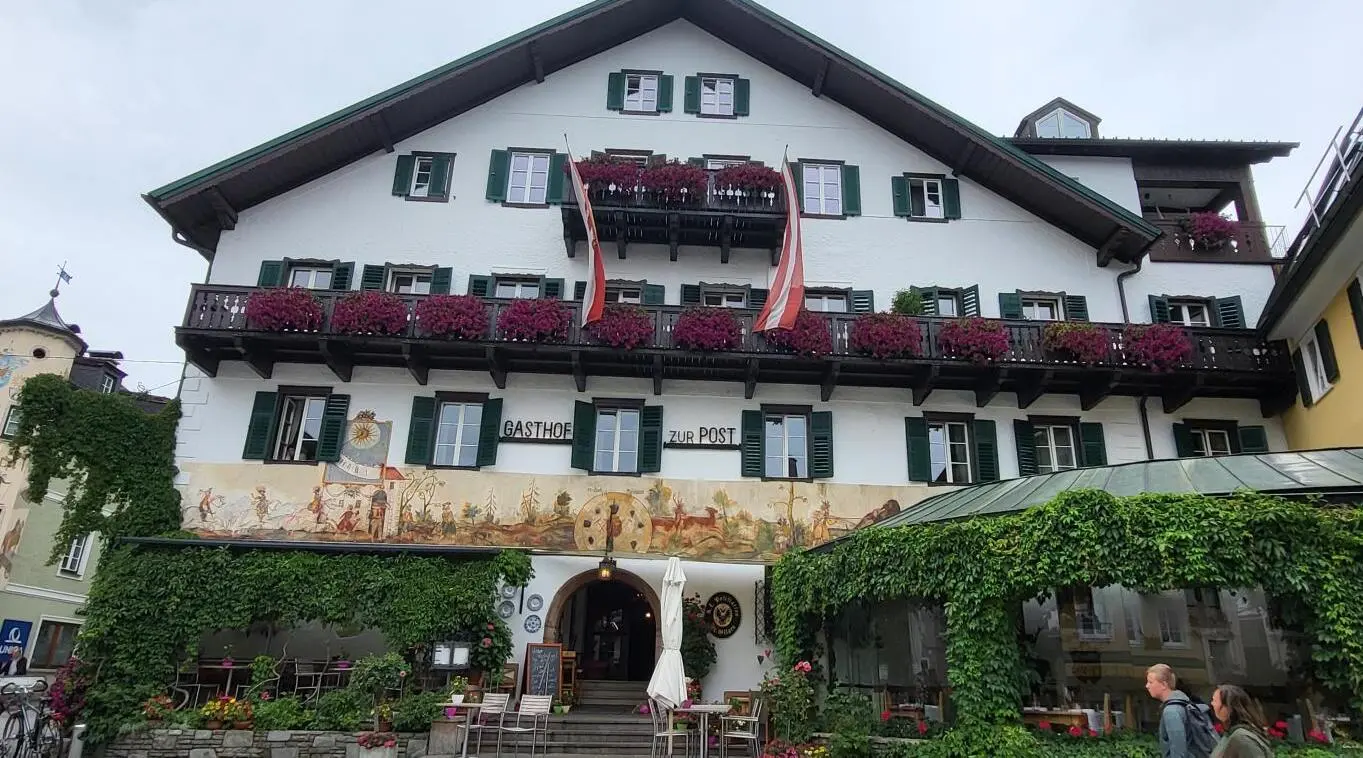
During our short visit, we also passed by the St. Gilgen church, located in another square of the town, called Kirkenplatz. The church was built at the end of the 18th century and bears the name of the saint who also gave the town its name.
This is the church where Mozart's grandparents and sister got married, his mother was baptized, and his grandfather and brother-in-law are buried in the cemetery behind it.
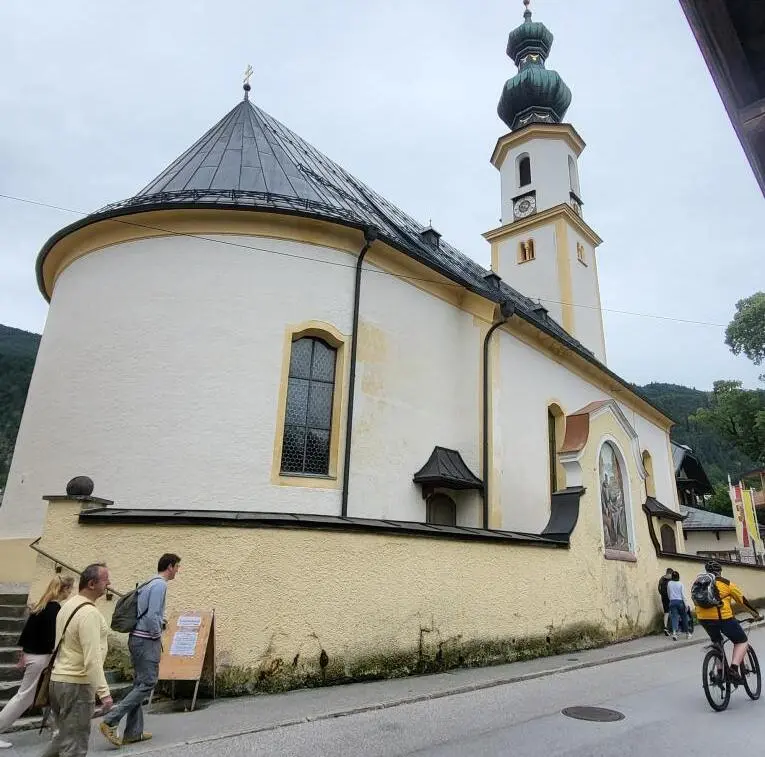
Starting from St. Gilgen, one can go hiking, mountain trekking, take walks on the lake, or even go up by cable car.
We managed to cover the three enchanting villages, hitting the major attractions, and continued our journey towards Salzburg. Those who wish to stay longer will not get bored, having numerous options for walks and entertainment in the area.
Thank you for reading and make sure to subscribe. We're constantly exploring new destinations and share our stories, tips, and the beauty we discover along the way.

